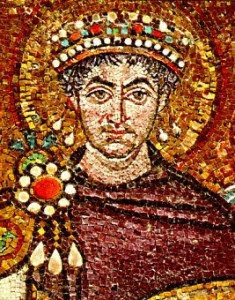
Byzantium’s Role in the Formation of Early Medieval Civilization: Approaches and Problems
By Michael McCormick
Illinois Classical Studies, Vol.12:2 (1987)
Introduction: Until recently, Europe from the collapse of Roman power in the fifth century to the Carolingian achievement in the ninth—the early Middle Ages—has been the poor step-child of modem historical research. The reasons are not hard to find. Contemporary sources are few and difficult, their language is laced with obscurity, and lingering prejudice against the “dark ages” can still be perceived, especially in North America. But because a problem is difficult does not mean that it can be ignored. And it is increasingly difficult to deny that the long twilight period on the edges of Antiquity and the Middle Ages was fertile and even decisive for the destiny of medieval—and modem—civilization.
These centuries prepared the ground on which the high Middle Ages would build and out of which the modern world would grow. Not a few salient characteristics of contemporary westem civilization appear there for the first time. It was then that Christianity conquered northem Europe and that the Germanic, Slavic and Arab peoples emerged as key players on the world stage. It is here that we find the direct ancestors of phenomena as diverse as Europe’s modem nation states and today’s “Roman” alphabet, a style of writing invented by the scribes of Charlemagne’s kingdom in the eighth century.
While many factors which shaped early medieval Europe must be sought, of course, within that civilization’s internal development, there is little reason to think that outside stimulus was less influential here than in other, comparable cultures. And few would deny that the diffusion of a civilization’s culture beyond its frontiers is of great historical significance to understanding both that civilization and its beneficiaries. In the case before us, Byzantium’s contribution beyond its boundaries has been detected in domains as diverse as the music, art, thought, political symbolism and language of the early medieval West. Thus, it was Byzantium that supplied the organs which Carolingian rulers first introduced into church services. Early and middle Byzantine masterpieces inspired Carolingian and Ottonian book illuminators, while the court of Constantinople provided the very manuscript which stands at the beginning of western theology’s neoplatonizing mysticism. The extent to which the medieval West and its heirs have assimilated their Byzantine inheritance is suggested by the surprise one feels at discovering that this legacy includes state welcome ceremonies such as we now see at airports, or that Byzantium gave us words—and the realities behind them—like “ink,” “pasta,” “bronze,” “boutique,” and “diaper.”
Click here to read/download this article (PDF file)
Source
By Michael McCormick
Illinois Classical Studies, Vol.12:2 (1987)
Introduction: Until recently, Europe from the collapse of Roman power in the fifth century to the Carolingian achievement in the ninth—the early Middle Ages—has been the poor step-child of modem historical research. The reasons are not hard to find. Contemporary sources are few and difficult, their language is laced with obscurity, and lingering prejudice against the “dark ages” can still be perceived, especially in North America. But because a problem is difficult does not mean that it can be ignored. And it is increasingly difficult to deny that the long twilight period on the edges of Antiquity and the Middle Ages was fertile and even decisive for the destiny of medieval—and modem—civilization.
These centuries prepared the ground on which the high Middle Ages would build and out of which the modern world would grow. Not a few salient characteristics of contemporary westem civilization appear there for the first time. It was then that Christianity conquered northem Europe and that the Germanic, Slavic and Arab peoples emerged as key players on the world stage. It is here that we find the direct ancestors of phenomena as diverse as Europe’s modem nation states and today’s “Roman” alphabet, a style of writing invented by the scribes of Charlemagne’s kingdom in the eighth century.
While many factors which shaped early medieval Europe must be sought, of course, within that civilization’s internal development, there is little reason to think that outside stimulus was less influential here than in other, comparable cultures. And few would deny that the diffusion of a civilization’s culture beyond its frontiers is of great historical significance to understanding both that civilization and its beneficiaries. In the case before us, Byzantium’s contribution beyond its boundaries has been detected in domains as diverse as the music, art, thought, political symbolism and language of the early medieval West. Thus, it was Byzantium that supplied the organs which Carolingian rulers first introduced into church services. Early and middle Byzantine masterpieces inspired Carolingian and Ottonian book illuminators, while the court of Constantinople provided the very manuscript which stands at the beginning of western theology’s neoplatonizing mysticism. The extent to which the medieval West and its heirs have assimilated their Byzantine inheritance is suggested by the surprise one feels at discovering that this legacy includes state welcome ceremonies such as we now see at airports, or that Byzantium gave us words—and the realities behind them—like “ink,” “pasta,” “bronze,” “boutique,” and “diaper.”
Click here to read/download this article (PDF file)
Source